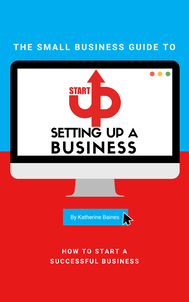Communications & Technology

Email
Email is now an integral part of all business communications. I always advise that you get an email address that matches your domain. It does cost money but looks so much more professional than using a Gmail, or Hotmail email address. You normally get your email address from the same company you bought your domain name from.
As emails are now part of day-to-day communications and have in many cases replaced the traditional letter, you must make sure that your business information is put on the footer of your email. I suggest you create an email signature that automatically comes up when you start a new email so that all the information is on there automatically.
You need to include, your name if you are a sole trader, or the names of the partners if you are a partnership, the company name if a limited company along with your company registration number. Also, your VAT number if applicable and your registered office and business trading address.
It is also good to include your contact details such as telephone number and a link to your website or web address.
If you want to take it one step further, you can also add links to your social media profiles too.
Email is now an integral part of all business communications. I always advise that you get an email address that matches your domain. It does cost money but looks so much more professional than using a Gmail, or Hotmail email address. You normally get your email address from the same company you bought your domain name from.
As emails are now part of day-to-day communications and have in many cases replaced the traditional letter, you must make sure that your business information is put on the footer of your email. I suggest you create an email signature that automatically comes up when you start a new email so that all the information is on there automatically.
You need to include, your name if you are a sole trader, or the names of the partners if you are a partnership, the company name if a limited company along with your company registration number. Also, your VAT number if applicable and your registered office and business trading address.
It is also good to include your contact details such as telephone number and a link to your website or web address.
If you want to take it one step further, you can also add links to your social media profiles too.

Telephone
There are many options available to you with regard to telecommunications, the one thing I will say though is that it is not wise to use your home phone number or personal mobile number otherwise you will never be able to take a break from your business.
The most cost-effective way I have found is to have a remote landline number that automatically comes through to a pay as you go mobile. This way you can get a number with your area code, which is very useful if you want people to know your business is local, however any calls that come through to your new pay as you go mobile you know to answer with your business name so that you always appear professional, you can also put an answer phone message on that phone specific to your business.
There are fees per incoming call on a remote landline number, but they are minimal in the scale of things, and if you have a personal mobile on contract with unlimited minutes you can always say you will call them back. If you use 141 at the beginning of the number you dial, the person you are calling does not get to see your personal mobile number.
Before we had the office we used to use DBS Chess Telecom (www.dbs-uk.co.uk/telecoms/local-ghost-virtual-numbers.html), and I couldn’t fault the service, note though there are additional fees for low call volumes and fees for cancellation. There are many other providers out there, just make sure you read the terms and conditions before signing up to ensure you are not tying yourself in to a long-term contract.
Using a remote landline service seems to be cheaper than getting a second landline installed, and it means you can take your calls wherever you are. The estimated cost is around £20 set up fee then around £10 per month for a basic local landline.
There are many options available to you with regard to telecommunications, the one thing I will say though is that it is not wise to use your home phone number or personal mobile number otherwise you will never be able to take a break from your business.
The most cost-effective way I have found is to have a remote landline number that automatically comes through to a pay as you go mobile. This way you can get a number with your area code, which is very useful if you want people to know your business is local, however any calls that come through to your new pay as you go mobile you know to answer with your business name so that you always appear professional, you can also put an answer phone message on that phone specific to your business.
There are fees per incoming call on a remote landline number, but they are minimal in the scale of things, and if you have a personal mobile on contract with unlimited minutes you can always say you will call them back. If you use 141 at the beginning of the number you dial, the person you are calling does not get to see your personal mobile number.
Before we had the office we used to use DBS Chess Telecom (www.dbs-uk.co.uk/telecoms/local-ghost-virtual-numbers.html), and I couldn’t fault the service, note though there are additional fees for low call volumes and fees for cancellation. There are many other providers out there, just make sure you read the terms and conditions before signing up to ensure you are not tying yourself in to a long-term contract.
Using a remote landline service seems to be cheaper than getting a second landline installed, and it means you can take your calls wherever you are. The estimated cost is around £20 set up fee then around £10 per month for a basic local landline.

Computers
For almost all businesses you are going to need a computer or laptop to be able to run your business effectively and efficiently even if it just to manage your paperwork, but also for your marketing activities too.
I always advise that you have a separate computer just for business use so that there can be no accidental mishaps e.g. deleting data, emailing files accidentally etc. especially if there is a chance other members of your family might use the computer.
Dropbox is a fantastic piece of software that allows you to share files with other people, it can act like a mini server so if you intend to take on staff Dropbox enables you can share specific files with other people and you can access all your files wherever you are. Please be aware though of data protection advice with regard to where confidential data is stored in the world and check that if you use Dropbox you will still comply with data protection regulations.
On that point, it has come up in many conversations with regard to where our data was being held, I bought a WD My Cloud NAS Drive, which acts as a mini server in our office and so all client information is held on this WD drive in my office, so I know exactly where it is being stored. We do use dropbox for clients to upload files to us, to save them transferring them via email, but we then download them from dropbox on to our server.
It is also important to ensure that you have a backup; I believe with Dropbox Pro, you can access previous versions of your documents for up to 30 days, however for many businesses it may be worth having a proper backup elsewhere. I use Livedrive, who do a backup of my WD My Cloud NAS drive, and they state that they comply with the UK data protection regulation which suggests the data is held in the UK.
You also need to ensure you have virus protection such as Norton, to help keep your data safe. There are free versions if you can’t afford a premium version however you do need to make sure you have something in place to protect your files.
Also make sure you use secure passwords for the various things you will be signing up for. Make sure you use a mixture of capital letters, small letter, symbols and numbers, don’t use your pet’s name!
For almost all businesses you are going to need a computer or laptop to be able to run your business effectively and efficiently even if it just to manage your paperwork, but also for your marketing activities too.
I always advise that you have a separate computer just for business use so that there can be no accidental mishaps e.g. deleting data, emailing files accidentally etc. especially if there is a chance other members of your family might use the computer.
Dropbox is a fantastic piece of software that allows you to share files with other people, it can act like a mini server so if you intend to take on staff Dropbox enables you can share specific files with other people and you can access all your files wherever you are. Please be aware though of data protection advice with regard to where confidential data is stored in the world and check that if you use Dropbox you will still comply with data protection regulations.
On that point, it has come up in many conversations with regard to where our data was being held, I bought a WD My Cloud NAS Drive, which acts as a mini server in our office and so all client information is held on this WD drive in my office, so I know exactly where it is being stored. We do use dropbox for clients to upload files to us, to save them transferring them via email, but we then download them from dropbox on to our server.
It is also important to ensure that you have a backup; I believe with Dropbox Pro, you can access previous versions of your documents for up to 30 days, however for many businesses it may be worth having a proper backup elsewhere. I use Livedrive, who do a backup of my WD My Cloud NAS drive, and they state that they comply with the UK data protection regulation which suggests the data is held in the UK.
You also need to ensure you have virus protection such as Norton, to help keep your data safe. There are free versions if you can’t afford a premium version however you do need to make sure you have something in place to protect your files.
Also make sure you use secure passwords for the various things you will be signing up for. Make sure you use a mixture of capital letters, small letter, symbols and numbers, don’t use your pet’s name!

CRM Systems
If you are going to be a continually growing your business with more than a hand full of customers and contacts, then you are likely to need a CRM (customer relationship management) system.
A CRM system will help you track your initial leads through to becoming a customer, and then help you build and maintain the relationship with your customers.
There are various options available to you. You could simply use an excel spreadsheet or simple Microsoft Access database, however there are much more sophisticated products available now online that you can programme to send out emails automatically to guide customers through your sales funnel.
Of course, it depends on what you are doing for your business as to how good a system is needed, however my advice is to think long term as if you put the right system in now that will do what you need it to do now and when you grow will be ready for growth, rather than having to change systems in the future, so get it right from day one.
I bet you are saying that is easier said than done? Well write a checklist of things you will potentially use your CRM system for example:
There are two online systems that come highly recommended, they are InfusionSoft and Agile CRM these are especially good if you are an online business as they both help you with your sales process. I have also used Solve 360 from Norada which links into Google mail and indexes your emails into the CRM system so that you and your team can see all the emails from each of the clients.
Some CRM systems also allow you to create templates for letters and emails that you will use a lot, so if it has this feature it would save you a lot of time.
If you are going to be a continually growing your business with more than a hand full of customers and contacts, then you are likely to need a CRM (customer relationship management) system.
A CRM system will help you track your initial leads through to becoming a customer, and then help you build and maintain the relationship with your customers.
There are various options available to you. You could simply use an excel spreadsheet or simple Microsoft Access database, however there are much more sophisticated products available now online that you can programme to send out emails automatically to guide customers through your sales funnel.
Of course, it depends on what you are doing for your business as to how good a system is needed, however my advice is to think long term as if you put the right system in now that will do what you need it to do now and when you grow will be ready for growth, rather than having to change systems in the future, so get it right from day one.
I bet you are saying that is easier said than done? Well write a checklist of things you will potentially use your CRM system for example:
- Signing people up to your mailing list
- Emailing them special offers
- Sending them emails/letters asking them to send you information
- Getting them to sign up for a service
- Review emails that have been sent
There are two online systems that come highly recommended, they are InfusionSoft and Agile CRM these are especially good if you are an online business as they both help you with your sales process. I have also used Solve 360 from Norada which links into Google mail and indexes your emails into the CRM system so that you and your team can see all the emails from each of the clients.
Some CRM systems also allow you to create templates for letters and emails that you will use a lot, so if it has this feature it would save you a lot of time.
Skype & Zoom
Both Skype and Zoom allows you to make video and audio calls. Since Covid-19 Zoom has significantly risen in popularity. It is something that I use daily in my business as it allows me to communicate with clients effectively and at minimal cost.
You do need a good internet connection and as a minimum a microphone and speakers which most laptops now have as standard. Both systems allow you to share screens, so if you are training someone on how to use a piece of software, they can share their screen with you so that they can be in the driving seat and you can then talk them thorough how to use it.
Skype & Zoom really are useful tools that mean location isn’t a barrier to doing business anymore, as you can still keep a personal touch by using a webcam to stay in touch, I know it isn’t the same as meeting face to face, but it is the next best thing. It also means you can work more efficiently and reduce your travel costs and travel time significantly.
You do need a good internet connection and as a minimum a microphone and speakers which most laptops now have as standard. Both systems allow you to share screens, so if you are training someone on how to use a piece of software, they can share their screen with you so that they can be in the driving seat and you can then talk them thorough how to use it.
Skype & Zoom really are useful tools that mean location isn’t a barrier to doing business anymore, as you can still keep a personal touch by using a webcam to stay in touch, I know it isn’t the same as meeting face to face, but it is the next best thing. It also means you can work more efficiently and reduce your travel costs and travel time significantly.

